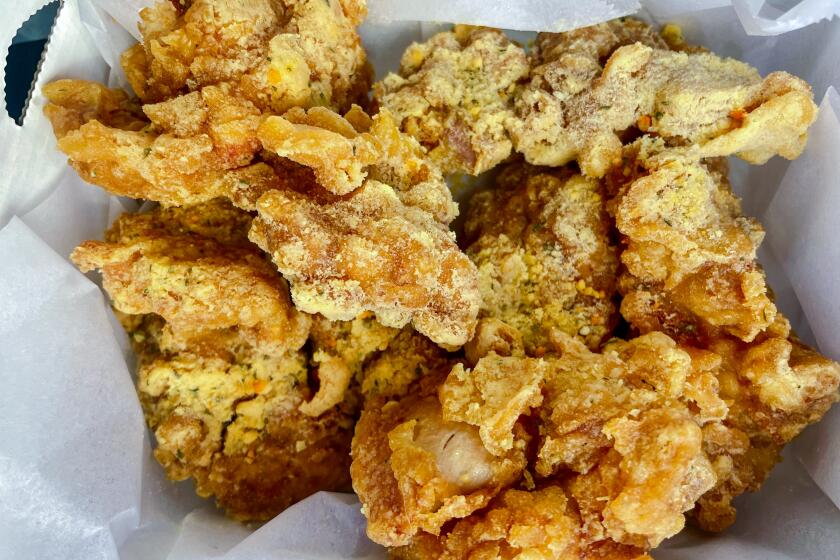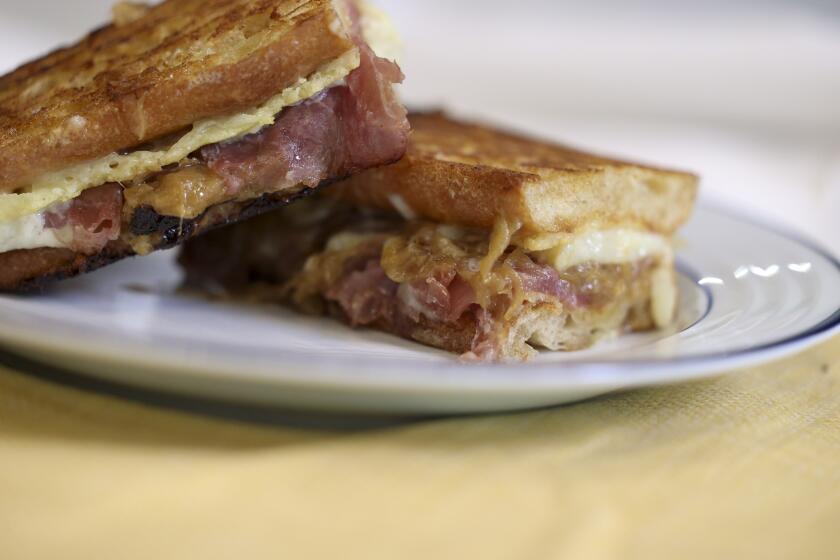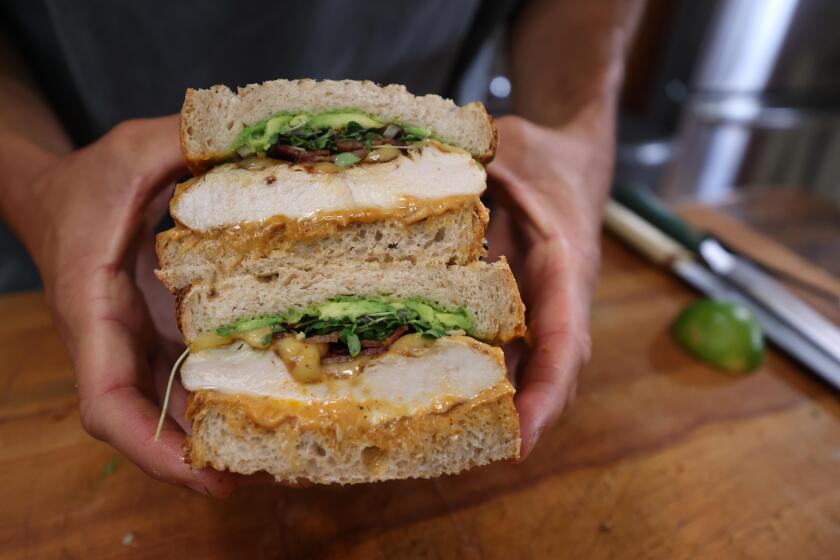Color Me Ripe
When you go to the supermarket this summer and see fruit marked “tree-ripe,” you can believe what you read--for the first time in years.
It used to be that all anyone had to do to claim their peaches were tree-ripe was slap a sticker on the fruit saying so. There were no standards determining what tree-ripe meant, nor did anybody check up on it.
This year, any peaches, plums and nectarines that claim to be tree-ripe will have to meet minimum standards. And there will be federal inspectors watching.
The only question: What exactly will the new regulations mean? Not as much as it might seem, it turns out.
In the world of tree fruit there are two levels of quality. Any fruit sold must meet at least the federal standard of U.S. Mature. Fruit that has been on the tree a little longer--three to seven days more than U.S. Mature, typically--can qualify for the California Well Mature label. To meet the new Tree-Ripe standard, fruit must be at least California Well Mature. But at the better packing houses, the vast majority of the fruit was already meeting those standards.
What’s more, determining the level of ripeness is not as simple as it might seem. While the difference between ripe and unripe might seem obvious when you bite into a sweet, melting piece of fruit, trying to break that down into scientific standards is tough.
Right now, it’s all done by color--not sweetness, not softness. The inspectors will check the various fruit varieties against something that looks like the paint chip strips you use when deciding what color to paint the living room. The more yellow, in the case of peaches and nectarines, the better.
“A lot of research is being done into what is the most reliable index for measuring fruit maturity,” says Marilyn Watkins of the California Tree Fruit Agreement, a trade group of fruit growers. “They’re looking at pressure, sugar, size and shape, soluble solids. . . . They have found that color is as good an indicator as any other.”
“This is not the best regulation, but at least we’re protecting quality a little bit,” says Carlos Chrisosto, of the University of California at Davis’ Kearney Agricultural Center. “We’re going through a lot of discussion right now to try and develop a better definition for tree-ripe, but it’s not easy.”
More to Read
Eat your way across L.A.
Get our weekly Tasting Notes newsletter for reviews, news and more.
You may occasionally receive promotional content from the Los Angeles Times.











